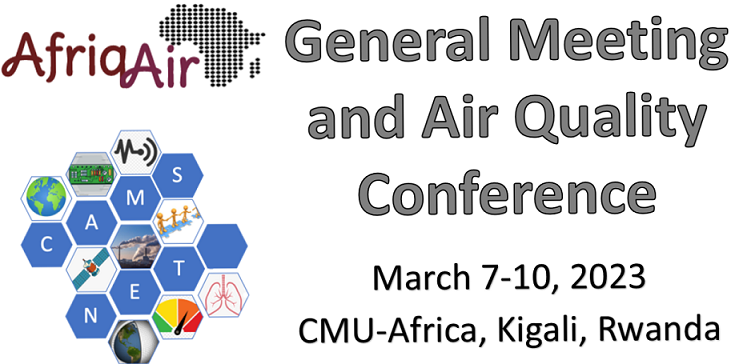Speaker
Description
Estimates of air pollution mortality in sub-Saharan Africa are limited by a lack of surface observations of fine particulate matter (PM2.5). Despite being a large metropolis, Kinshasa, Democratic Republic of the Congo (DRC), population 14.3 million, has had little attention towards air quality monitoring. In 2019, a 5-node PurpleAir network was deployed in the city. Calibrated annual average PM2.5 for 2019 in Kinshasa was estimated at 43.5 µg m-3, more than 8 times higher than WHO Interim Target 1 of 5 µg m-3. This initial study motivated additional instrumentation in Kinshasa, the whole Congo and neighboring Brazzaville. New deployments included a small Clarity Node-S network, a QuantAQ Modulair, and a reference method PM2.5 MetOne Beta Attenuation Monitor (BAM-1020). In addition, monitoring of gas-phase species, including NO2, O3, CO, CO2 is now underway. Here we present first results from this aggregated, multi-sensor, multi-species network in the Congo. We first conduct a sensor intercomparison, comparing the performance of three different popular sensor brands (PurpleAir, Clarity, and QuantAQ) evaluated against the reference BAM-1020. Initial findings suggest that QuantAQ PM2.5 is most correlated and least biased compared to the reference, followed by PurpleAir and by Clarity. We also use our co-location to develop a simple correction factor using both Multiple Linear Regression and Gaussian Mixture Regression, a probabilistic method that has been shown to perform better than commonly used methods in other African cities. We also leverage on-site gaseous pollutant concentrations, particle size distribution data from an optical particle counter, and anemometer data to draw some initial conclusions about sources of PM2.5 in Kinshasa. In particular, we link factors resolved from a nonnegative matrix factorization method using the gaseous species and particle bin concentrations to particular source profiles (e.g. combustion). Our results highlight the need for clean air solutions implementation in the Congo.

